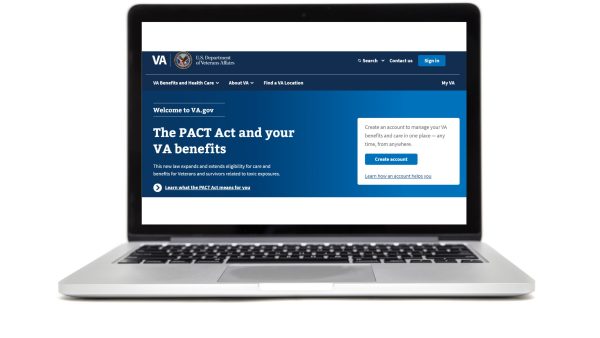Looking for Expert-Level VA Claim Answers?📱Call Us Now! 737-295-2226
Were you injured while in the military?
Or did your time in the military make a previous injury worse or cause a condition to develop over time?
If this describes you, then keep reading because you might have a service-connected disability, which makes you eligible for VA disability benefits.
In this post, we’re breaking down the form your VA claims journey begins with: 21-526ez. This is the form used to submit your claim to the VA.
We’ll show you box-by-box how to fill out each of the three sections and reveal what you need to know to successfully fill out the 21-526ez. Let’s get started!
Summary of Key Points
-
Purpose: 21-526ez is the VA form used to apply for VA disability compensation and related benefits, for veterans with service-connected disabilities.
-
Submission Options: You can submit the form online through va.gov, by mail to a designated VA center, or in person at a VA regional office.
-
Fully Developed Claim (FDC) vs. Standard Claim: Choose between an expedited FDC, where you submit all evidence upfront for faster processing, or a Standard Claim, where VA assists in gathering evidence.
-
Next Steps: After submission, expect a processing time of about 120-150 days or more, depending on the VA claim backlog. The VA will inform you of their decision through mail or va.gov notification.
You DESERVE a HIGHER VA rating. We CAN HELP.
Take advantage of a VA Claim Discovery Call with an experienced Team Member. Learn what you’ve been missing so you can FINALLY get the disability rating and compensation you’ve earned for your service.
Table of Contents

What is 21-526ez?
21-526ez is the VA form used to apply for VA disability compensation and related compensation benefits.
It’s the form we’re referring to when we say “submit your claim,” and is how all VA claims get started. This is the form that gets you the VA rating you deserve.
The form itself has 13 sections. This seems like a lot, but most of them are easy to fill out.
At the top of the form are helpful instructions for submitting your claim, what evidence is required to win your claim, and what to do in a few special circumstances.
Be sure to read through it all; It’s useful information.
There is also some information on the form about the Fully-Developed Claim (FDC) and Standard Claim processes. We’re going to cover all that in step #1 below.
💥 But First… Submit an Intent to File 💥
If you’re considering filing for VA benefits, you should submit an Intent to File ASAP. This will lock in your VA effective date.
Your effective date is the date you become eligible for VA benefits. If there is a gap in time between your effective date and the date you begin receiving VA benefits, you could have back pay coming your way.
There are 3 ways to submit a VA intent to file:
- Submit VA Form 21-0966. Once completed, you can bring it to a VA regional office near you or mail it to:
Department of Veterans Affairs
Claims Intake Center
PO Box 4444
Janesville, WI 53547-4444
- You can also submit a VA intent to file over the phone. Just call 800-827-1000 Monday through Friday, 8:00 a.m. to 9:00 p.m. EST. Tell them “I’d like to submit an intent to file.”
- Initiating a claim through the va.gov website also serves as an intent to file.

21-526ez: How to Fill out this VA Form
Ok, now we’re getting into the meat of this post. Below are all the instructions you need for filling out the 21 526ez va form.
One quick disclaimer: Many of the boxes on form 21-526ez are self-explanatory. This post will skip those boxes to save you time. We’ll only explain the boxes that need explaining.
Step #1: Choose Fully Developed Claim (FDC) or Standard Claim
There are two simple differences between a fully developed claim and a Standard claim:
- An FDC is expedited so it’s usually decided faster than a Standard Claim.
- With a Standard Claim, the VA will help you gather the records needed for your claim.
If you have:
- All private medical records related to the claimed condition, like reports from your own doctor or X-rays or other test results from a non-VA hospital or other treatment center, and
- All records of medical treatment you’ve received for the claimed condition while serving in the military, and
- All military personnel records you have that relate to the claimed condition, and
- Information about any related health records that you don’t have but that the VA can request on your behalf from a federal facility like a VA medical center or clinic
then you should consider submitting a Fully-Developed Claim. Be sure to submit all of that information with your VA Form 21-526ez.
BUT, if you know of evidence that could help your claim that’s not in your possession, file a Standard claim. This way, the VA will help you obtain those records.
To file a Standard Claim:
- Complete VA Form 21-4142 and VA Form 21-4142a and submit them with your claim.
- Provide the information the VA needs to request your records from the person or agency that has them.
During the Standard Claim process, you should also submit any evidence relevant to your claim to the VA as soon as possible. This will help ensure your claim is processed speedily.

Step #2: Complete all Sections
Now you’re ready to fill in 21-526ez.
Once you’ve decided what type of claim you want to file, check the appropriate box at the top of page 9. Be sure to also check the BDD box if necessary.
BDD stands for benefits delivery at discharge. You can submit this type of claim 90-180 days before leaving active duty.
Section I: Veteran’s Identification Information
Section I contains boxes 2-11. In these boxes, you’ll put information used to identify you as well as information about previous claims if you’ve filed with the VA before.
Boxes 4 & 5: If you’ve filed a VA claim before, check yes and provide the VA file number of the previous claim. This can be found in your va.gov account or at the top of most mail you receive from the VA about your claim.
Box 7: If you have a DOD ID number or a service number, list it here. Your DOD ID number can be found on the back of your Common Access Card (CAC). Depending on your service era, your Service Number can sometimes be the same as your social security number.
Box 8: If you’re submitting a BDD claim, put your expected discharge date in this box.
Section II: Change of Address
Boxes 13A-13C of VA Form 21-526ez only need to be filled out if you are planning on changing your address. Fill in the boxes as needed depending on if your planned change of address is temporary or permanent.
Section III: Homeless Information
Only fill out section III of form 21-526ez if you are currently homeless or are at imminent risk of being homeless.
According to the VA, homelessness is defined as living in a shelter, transitional housing, safe haven, or a place not meant for human habitation, or in an institution for 90 days or less and were in a shelter or place not meant for human habitation immediately before entering the institution.
Being at risk of homelessness means you expect to lose housing within 14 days, have no other housing options, and lack the resources or support network needed to find other housing.
If you meet either of these definitions then you should complete section III of VA Form 21-529ez.
NOTE: Be sure to put your social security number at the top of each page!
Section IV: Exposure Information
Section IV asks a few questions about any exposure you may have had to toxic substances during your military service.
Box 15A: If you have a condition and believe it was caused by toxic substances such as Agent Orange, contaminated water, nuclear weapons, burn pit smoke, asbestos, or biological weapons, check yes and fill out the rest of section IV.
If not, check no and move on to section V. You can find the complete list of toxic exposures on the VA’s website.
Section V: Claim Information
This part of the 21-526ez is where you’ll list all the conditions you believe were caused or made worse by your military service.
Under current disability(ies), list the name of your diagnosed condition(s) you believe were caused or made worse by your military service.
For example, if you’ve been diagnosed with PTSD, put PTSD in this column. All the conditions you list must be diagnosed by a medical professional or your claim will be denied.
In the column labeled if due to exposure, event, or injury, please specify and explain what you believe caused your condition. This should be a specific cause you can prove such as “suffered an IED blast,” or “exposed to burn pit smoke while deployed in Afghanistan.”
In the explain how the disability(ies) relates to the in-service event/exposure/injury column of 21-526ez, explain the link between your disability and what caused it.
For example, if you lost your leg in an IED blast, put “leg lost due to IED blast,” or something along those lines. Put it in your own words.
Lastly, in the approximate date disability(ies) began or worsened column, write your best guess of when your disability began affecting your life. For some disabilities, this is a specific day. For others, it’s a date range.
Boxes 17 A-C: These boxes ask about the date and location of treatment you received for the disability(ies) you listed in item 16 above. Box B only needs to be filled out if you received treatment before 2005.
Section VI: Service Information
Section VI of VA Form 21-526ez is for information about your military service. Most of this information can be found on your DD-214.
Boxes 20 A&B: In these two boxes, put the date range of your most recent stint of active duty service and where you were last stationed.
If you’re still in the military, put the base you’ll be stationed at when you separate in box 20B.
Boxes 20 C&D: If you served in a designated combat zone during your time in the military, check box 20C yes and list the date range in box 20D.
You can see a list of designated combat zones on the Defense Financial and Accounting Service website.
Boxes 23 A&B: If you’ve ever been a prisoner of war (POW), check yes and put the dates you were confined to the best of your knowledge.
According to the VA, POW is defined as “if during wartime active service, you were forcibly detained or interned (put in prison) in the line of duty by an enemy government, its agents or a hostile force.”
Section VII: Service Pay
Because of the dual compensation rule (also known as the VA offset), you have to waive a portion of either your VA compensation or any payments you get from the DoD, such as retirement pay or drill pay. You can’t get the full amount of both (unless you have CRDP or CRSC).
Most veterans choose to waive their DoD pay because of the tax benefits that come with VA compensation.
To calculate what you’ll receive in total, reduce the amount of the payment you waived by the amount of the other. For example, if you’re eligible for $1,000/month in military retirement pay and $500/month in VA disability compensation, your retirement pay will be reduced by $500 and you’ll only get $1,000 total.
If your claim is approved, this section of VA Form 21-526ez helps the VA determine if any adjustments need to be made to your VA compensation based on the pay you receive from the DoD.
Box 25: In this box, check what type of retirement you have. If you don’t know, check your Retiree Account Statement.
Boxes 27 A-D: If you have received any type of separation pay from your branch of service, put that information in these boxes.
If your claim is approved, the VA might temporarily adjust your compensation to recoup some of that separation pay.
IMPORTANT NOTE: By submitting VA Form 21-526ez, you automatically waive military retirement pay. However, you can check box 26 if you DO NOT want to receive VA compensation instead of DoD retirement pay.
The same rule applies to active and inactive training pay. Check box 28 If you want to elect to keep your training pay instead of VA compensation.
Section VIII: Direct Deposit Information
The VA requires all payments to be made electronically with direct deposit.
In this section, fill out your banking information to enable direct deposit. You’ll also need to attach a voided check or deposit slip to your form 21-526ez.
If you don’t have a bank account and have had trouble qualifying for one in the past, you can view a list of veteran-friendly banks that might be able to help.
Section IX & X: Claim Certification and Signature
Sign and date in boxes 33A and 33B. If you sign by mark (e.g., “X”), you’ll need a witness to sign and date as well. Your witness will also have to provide their address.
Section XI: Alternate Signer and Certification and Signature
If someone has to sign on behalf of you, they need to first complete VA Form 21-0972 and attach it to VA Form 21-526ez when you submit it. Otherwise, an alternate signer will not be accepted.
Section XII: Power of Attorney (POA) Signature
Your Power of Attorney can also sign on your behalf if needed. They do not need to fill out VA Form 21-0972.
However, they do need to complete VA Form 21-22 or VA Form 21-22a.
These are the forms used to appoint a representative for your VA claim. These forms must be on record with the VA before you submit your claim, otherwise, the POA signature will not be accepted.
Section XIII: Claim Information (Addendum)
Section XIII is a continuation of section V. If you didn’t have enough room to list your disabilities in section V, you can continue your list here.

Step #3: Submit it to the VA
After you’ve completed your 21-526ez, it’s time to submit it to the VA!
You have a few options for submitting your claim:
- Online at va.gov. You’ll need to create an account if you haven’t already.
- By mail to:
Department of Veterans Affairs
Claims Intake Center
PO Box 4444
Janesville, WI 53547-4444
- In person at a VA regional office
What’s Next?
After you submit your claim, it’s time to play the hurry-up-and-wait game. You’re now here in the process and have a long way to go.

Figure 1. 8-step VA claims process
As we mentioned above, with a Standard Claim, the VA is going to help you gather the necessary evidence. Once it’s all gathered, they’ll go through it with a fine-tooth comb.
If you submitted an FDC, the VA may want to gather more evidence. They could schedule a C&P Exam, for example.
After that, they’ll move on to the Review of Evidence stage.
After reviewing the evidence, the VA then deliberates a decision. This deliberation decides TWO things:
- Whether or not your claimed disability is service-connected. If they decide it’s not, your claim will be denied and you won’t get a VA rating.
- If they decide your disability is service-connected, they’ll award you a VA rating percentage. This rating percentage will decide how much monthly compensation you get and what other VA benefits you have access to.
All in all, the VA claims process typically takes between 120-150 days (or more, see VA Claims Backlog by State ). At the end, the VA will inform you of their decision via a letter and/or a notification in your va.gov account.
Related: VA Claims Backlog by State
(Video) How to File a VA Claim Online
Recapping: 3 Key Facts About the 21-526EZ
Key Fact #1 – You’ll need to provide complete and accurate information (including medical evidence).
No matter what kind of claim you’re submitting for compensation via VA Form 21-526EZ, you’ll need to have the supporting documents proving you’re eligible for these benefits. This includes medical evidence that supports your claim, documenting that you actually have the condition and connecting the condition or disability to your military service.
(To receive disability compensation from the VA, you must have a disabling condition that the VA believes is due to your time in service—this is the service connection you’ll be proving during your claim.)
The form contains sections that prompt you for the necessary information. Section IV, the most in-depth portion, will collect information about current disabilities that you want to service-connect to receive benefits. For each disability, you’re asked to specify the following:
- Whether the disability is due to an in-service exposure, event, or injury;
- How the disability relates to the in-service exposure, event, or injury; and
- Approximate date the disability began or worsened
If you need more space than is provided, you can include an addendum. Make sure to note on VA Form 21-526EZ that you’re attaching additional information at the end of your claim application.
(Medical evidence is critical; the #1 reason VA claims are denied is lack of medical evidence. If you’re not sure what medical evidence to provide or how much, or how to get it, check out our post “What You Need to Know About Your Medical Records.” This post goes into more detail about the VA claims process in general.)
You’ll also be asked to provide information regarding your military service, such as branch of service and your enlistment/discharge dates. And you’ll need to provide bank account information so the VA can transfer monthly compensation (if approved) directly into your bank account.
Key Fact #2 – You need to choose a Fully Developed Claim or the Standard Claim process.
This is a critical choice you’ll make when filling out VA Form 21-526EZ. There are two claims processes to choose from: the fully developed claim program (FDC program) and the Standard Claim Process.
The FDC program is an optional, expedited process for having your claim reviewed. When you choose this option, you commit to submitting all of the evidence available to support your claim along with your application. You’re stating that no additional evidence is needed, thus enabling VA to make a decision more quickly.
If you select the FDC option upon filing, but then discover additional evidence to support your VA claim, you are still able to submit that evidence. However, your claim will be converted to the Standard Claim Process upon that submission.
Likewise, if the VA determines that more evidence is required, your claim will be moved into the Standard Claim Process.
At VA Claims Insider, we’re strong advocates for filing a Fully Developed Claim because it’s generally faster, and you maintain full control of your claim and all the evidence. We specialize in teaching you how to do it! We find that FDCs result in faster decisions with a higher (more accurate and deserved) rating.
In the Standard Claim Process, VA has the responsibility to obtain information to support your claim. (That’s why it takes longer.) You may submit additional evidence for up to one year after filing your claim. If you wish to opt into the Standard Claim Process, specify that by checking the box under item 1 at the very top of your VA Form 21-526EZ.
Key Fact #3 – There are multiple ways to file.
If you’re not feeling comfortable submitting your 21-526EZ online using the VA’s eBenefits platform, you can submit the form through the mail. This will slow down the process, but it’s fine to use this option. Send to the Department of Veterans Affairs, Evidence Intake Center, PO Box 4444 in Janesville, WI 53547-4444.
You can also submit in person, bringing your completed 21-526EZ to a VA Regional Office near you.
-
Pro Tip: Generally speaking, filing your VA claim online is the fastest and most convenient way to apply for VA disability benefits.
You can only have one claim open at any given time, so you should finish the VA Form 21-526EZ that you’ve begun rather than start a new one if you come back to the process after a break.
If you plan to file a VA disability claim but need more time to gather evidence, you can submit VA Form 21-0966—the “intent to file a claim” form. After submitting your Intent to File, you have a year from that date to complete your claim using VA Form 21-526EZ. The filing date of your Intent to File becomes the effective date of your claim. Learn more about VA Intent to File.
About VA Claims Insider
- VA Claims Insider is a highly rated, veteran-owned and operated business.
- 25,000+ disabled veterans served in our membership programs since 2016.
- Employs 175 teammates, comprised of 54 veterans and 14 military spouses.
- 4.7/5.0 average rating out of 4,000+ total reviews; over 3,000 5-star reviews.

Clay Huston
Clay Huston is a former U.S. Army Reserves Blackhawk Pilot and officer. Clay enlisted in the Army in 2013 and was commissioned as a 2LT in 2017 after earning a business degree from the University of Illinois Champaign-Urbana.
Since separating from the military, Clay has pursued a career as a writer. He also runs the nonprofit notfatherless.org, which fundraises for Children’s Homes in Mexico.




